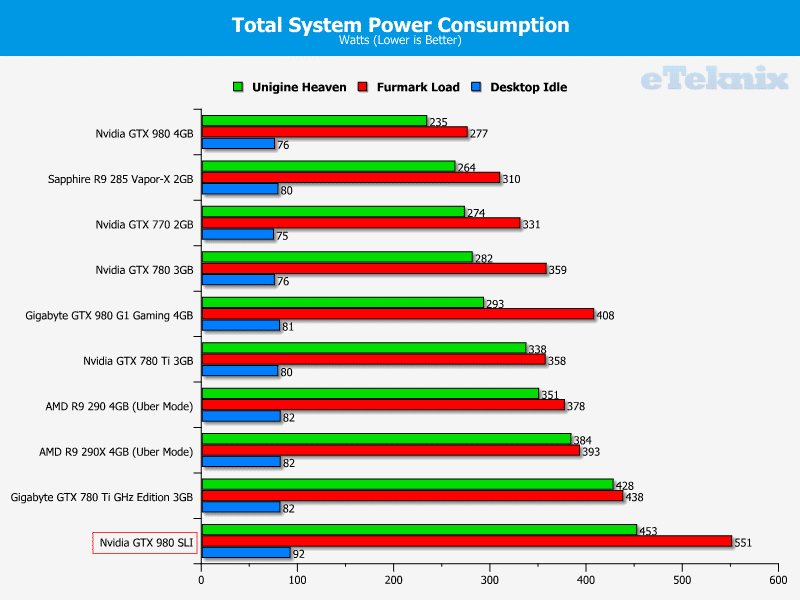Testing Nvidia’s GeForce GTX 980 4GB Graphics Cards In SLI
Ryan Martin / 10 years ago
Power Consumption
With electricity becoming increasingly expensive across most parts of the world the need for computer components to become power efficient has never been more relevant. Graphics cards are often the most power hungry components inside a desktop system so having an efficient graphics card is very important to keeping power bills under control. Power is often correlated to heat and so lower power consumption means a graphics card is likely to run slightly cooler and put out less heat into your system meaning your other components will run cooler with improved longevity. AMD and Nvidia have both made power consumption an integral part of the way graphics cards dynamically overclock so the need for graphics card vendors to use efficient VRM and PCB designs is becoming important to maximise performance. We take power readings after 5 minutes of three different load scenarios: desktop idle, Furmark load and Unigine Heaven load.

Power consumption is impressive for an SLI configuration. Both GTX 980s consume only marginally more than a single GTX 780 Ti GHz Edition graphics card yet deliver significantly more performance in a real-world style application like Unigine Heaven. Under Furmark power consumption soars mainly due to the high consumption of the GTX 980 G1 Gaming.



















